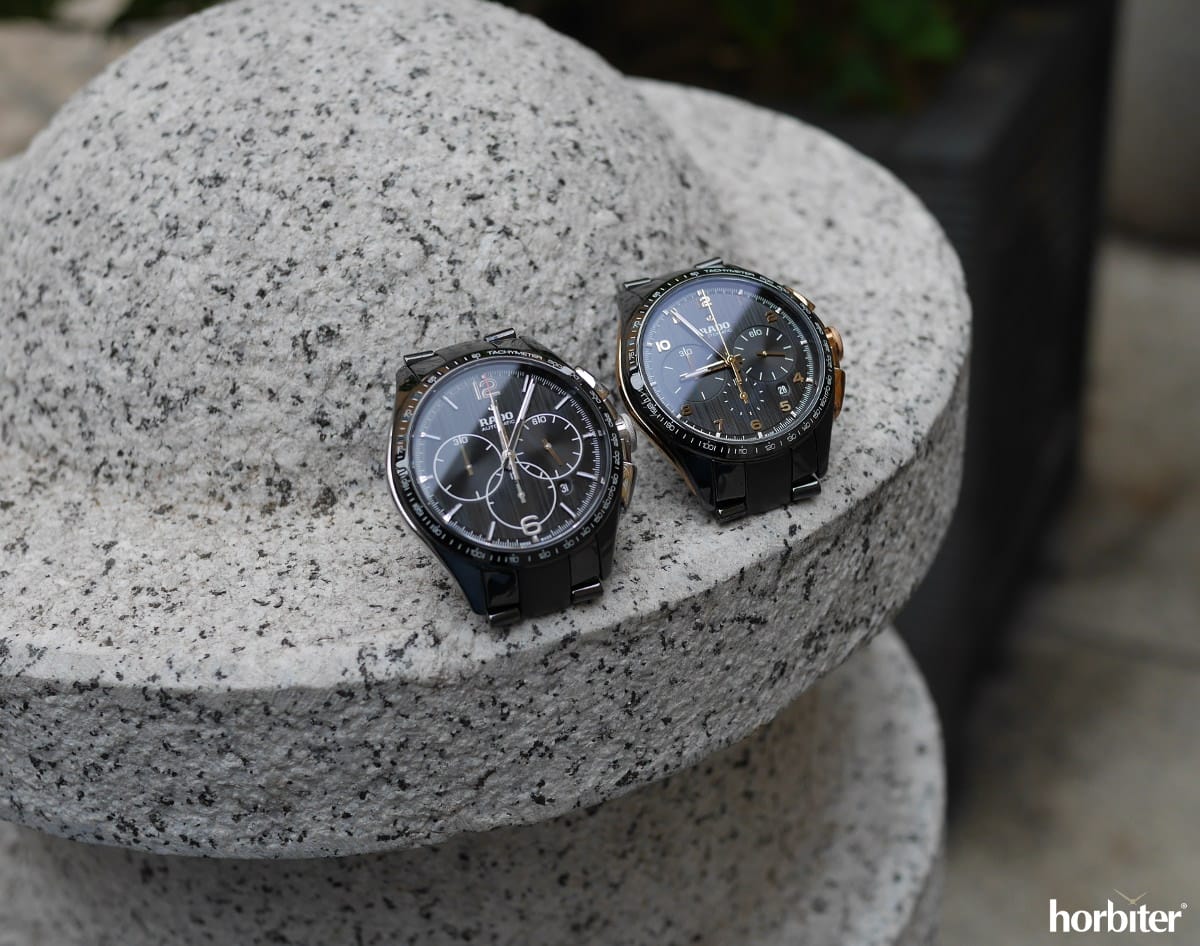It has been awhile since my first encounter with a Rado Hyperchrome. It was 2015 and the brand had recently launched its Rado Hyperchrome Match Point Limited Edition; a tribute to the world of tennis introduced through Rado’s most popular collection.
It was an eye opener for even the most traditional watch-enthusiasts and it built a bridge connecting the culture of ceramic and that of stainless steel three-counter-chronographs.
The Hyperchrome is the connecting link between two worlds that used to be separated from each other and it is in my opinion the timepiece that helped Rado, more than it helped the other half of the world, capture the attention of a wider audience.
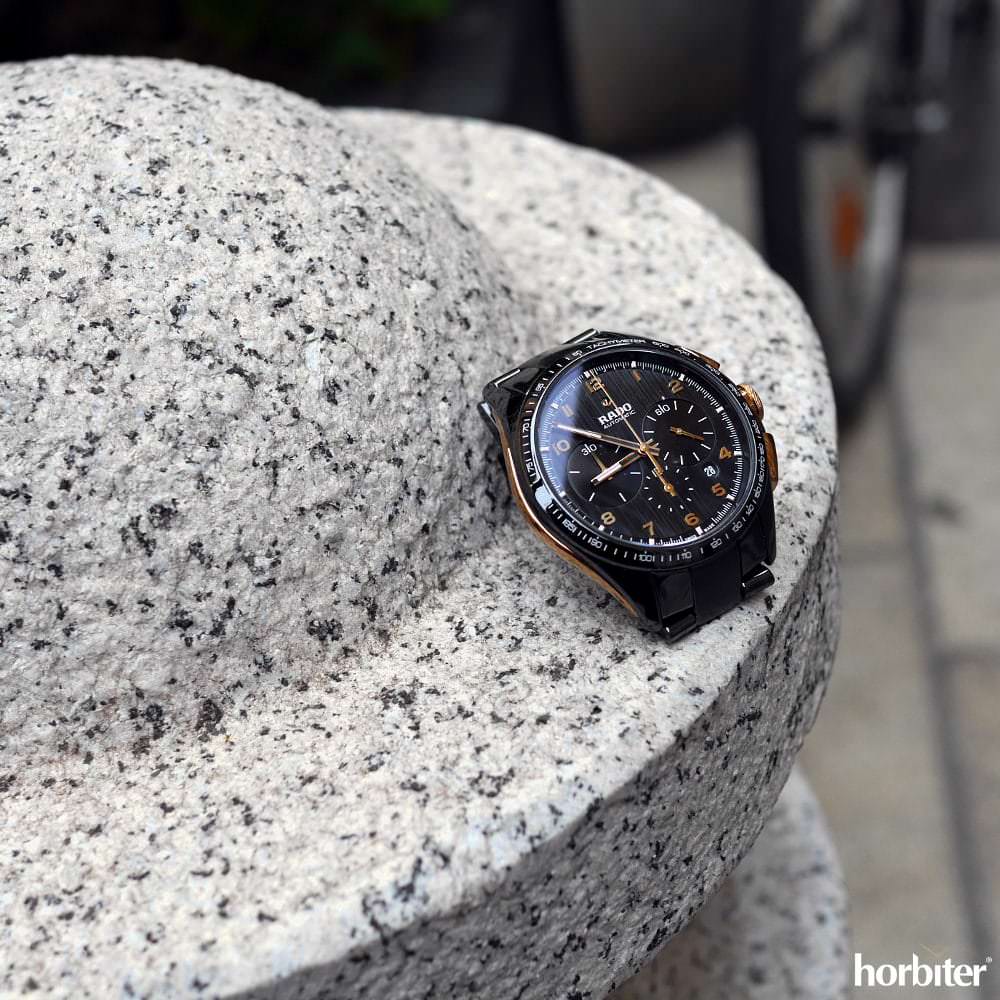 In two years’ time that collection has rapidly expanded and the chronograph (which, somehow, appeared to be the product that deviated the most from the design standards imposed by the brand from Legnau) has now adopted the colour black; a hue that we all naturally associate with ceramic when it comes to watches.
In two years’ time that collection has rapidly expanded and the chronograph (which, somehow, appeared to be the product that deviated the most from the design standards imposed by the brand from Legnau) has now adopted the colour black; a hue that we all naturally associate with ceramic when it comes to watches.
The two Rado Hyperchrome Automatic Chronograph timepieces that you can see in these photos are the last two models that have been added to the Hyperchrome collection.
The first of the two is perhaps closer to the architecture of the Hyperchrome Limited Edition; the three large circular intersecting counters are paired with applied baton-style indices, while the only Arabic numbers present are located at 12 o’clock and at 6 o’clock and on top of the three counters.
This is a hybrid version because the Hyperchrome also exists in a completely “nude” version that perfectly matches the typical minimal Rado style; no Arabic numbers at all.
The second version, on the other hand, features golden accents on applied Arabic indices, counters and buttons. Colour variations have been made possible thanks to the presence of ceramic and the hybrid case.
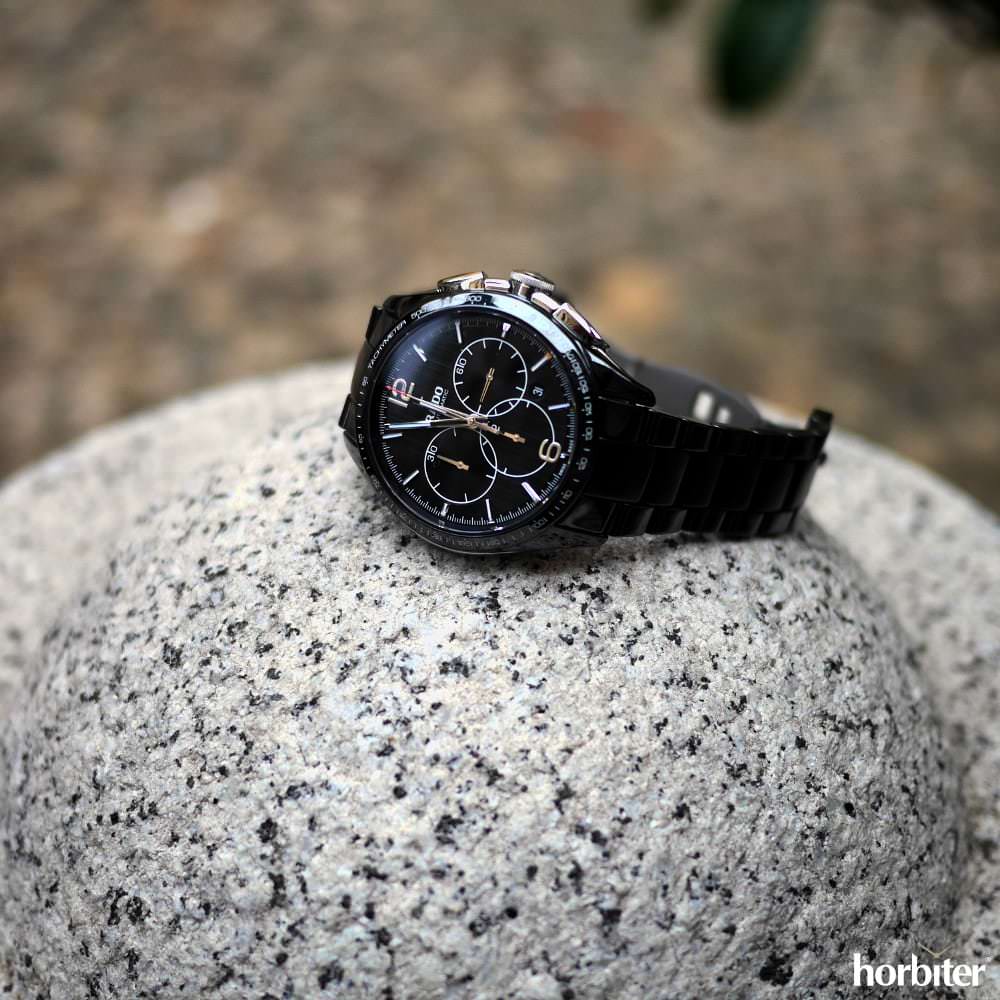 The case is a mixed solution that has made the Hyperchrome Chronograph famous. The ceramic case measures 45mm in size and it sports two steel-made side inserts, while the bezel with its tachymetric scale that goes up to 500kph is of exceptional beauty and brightness and the numerals on the scale are perfectly readable despite their thinness.
The case is a mixed solution that has made the Hyperchrome Chronograph famous. The ceramic case measures 45mm in size and it sports two steel-made side inserts, while the bezel with its tachymetric scale that goes up to 500kph is of exceptional beauty and brightness and the numerals on the scale are perfectly readable despite their thinness.
The ratio between the dial diameter and the case diameter is close to the unit; one of the most extreme ratios ever seen on a sports watch.
The steel-made inserts have been treated with PVD–gold colour on the version with Arabic numbers; a black-gold combination that is part of Rado‘s history. If you are familiar with the Rado Centrix or the Rado R20, you will immediately understand what I am talking about.
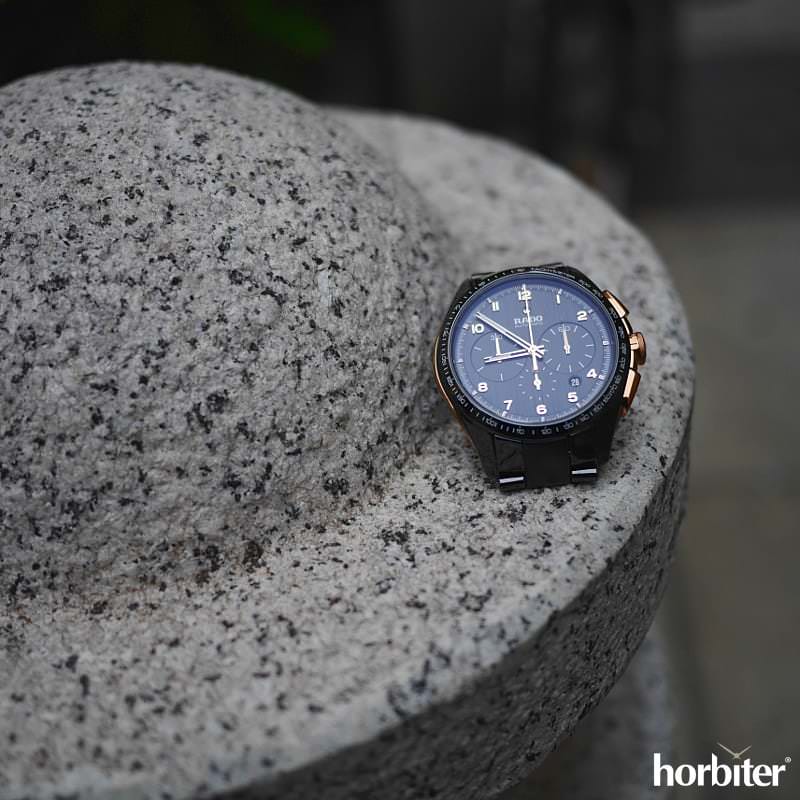 The chrono buttons are made of steel with a design that resembles the motif of motorbikes pedals and despite being polished, they are easy to operate and not slippery.
The chrono buttons are made of steel with a design that resembles the motif of motorbikes pedals and despite being polished, they are easy to operate and not slippery.
They are the extension of the crown protection element; a component on which Rado has probably exaggerated a bit size-wise.
The explanation for this decision is probably due to the fact that the designers aimed at making a crown that is easy to grab despite being very embedded and that is why the diameter of the outer ring is larger than the central grooved core.
If you own a 2894-2–caliber watch (I own one), a Rado Hyperchrome Automatic Chronograph will make you understand how much this caliber has evolved over time; it is now manufactured almost exclusively for the brands belonging to the group.
A feature that completely stands out is the timepiece’s feeling of comfort that is achieved thanks to the complete removal of any minimal vibrations during the charging process.
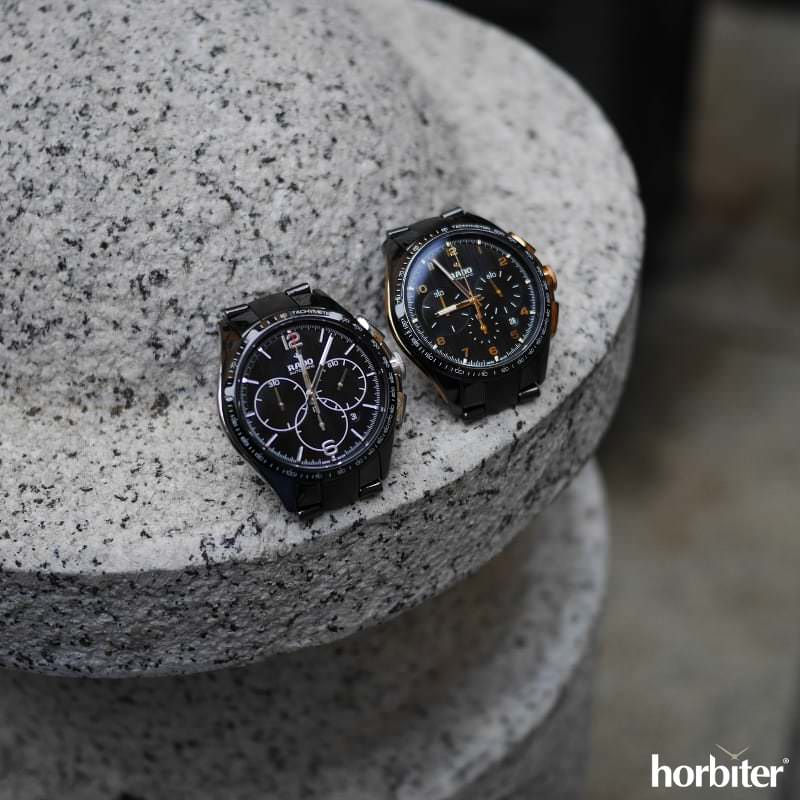 This reference now allows me to introduce the greatest pro of this watch and also the philosophy of those who choose a ceramic watch, despite the fact that, when wrapped around your wrist, its overall weight makes it very similar to a standard steel-made chronograph.
This reference now allows me to introduce the greatest pro of this watch and also the philosophy of those who choose a ceramic watch, despite the fact that, when wrapped around your wrist, its overall weight makes it very similar to a standard steel-made chronograph.
The feeling of comfort that you experience when you wear a Rado Hyperchrome Automatic Chronograph is unattainable; it is not as light as a feather, so I would suggest opting in that case for a Rado Hyperchrome Ultra Light and its extraordinary NATO strap (something however very reassuring for those, who want to constantly feel the presence of their watch wrapped around the wrist), but this timepiece is unique when it comes to satisfaction and longevity.
Being able to wear a watch for a whole day without having to worry too much about ruining it (as long as you do not overdo it), being able to take it off and put it back on to your work desk without noticing any scratches on the deployant buckle clasp or the bracelet, is definitely a guarantee.
When you wear a watch for at least 12 hours a day, this is an undeniable plus side as is your skin’s tolerance factor towards metals.
Two versions, two personalities, two quite different retail prices; the version with the three prominently featured counters retails at a price just below the 4,000–euro–threshold, while the version with golden PVD–accents retails at 4,650 euro.
(Photo credit: Horbiter®)
Gaetano C @Horbiter®
